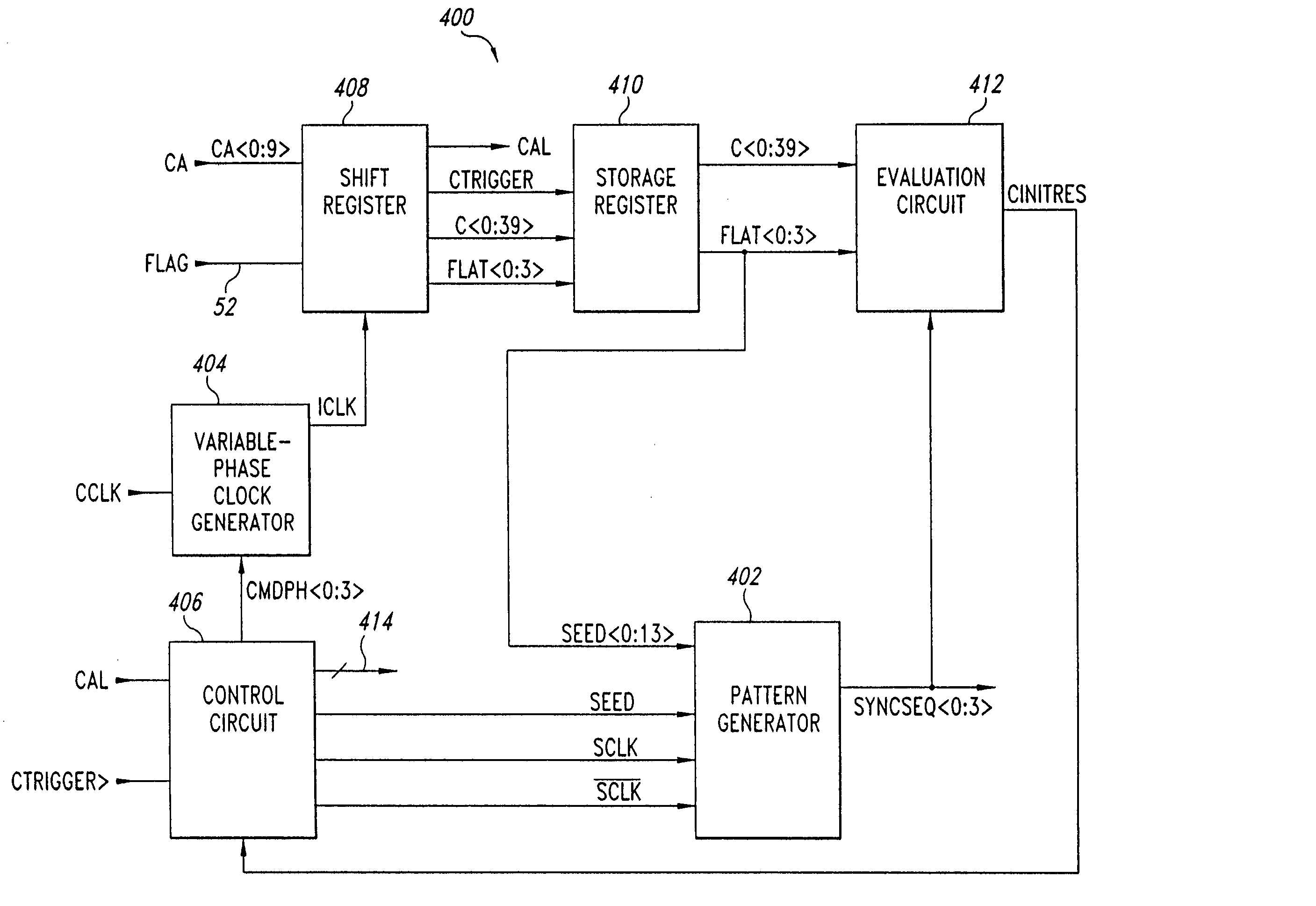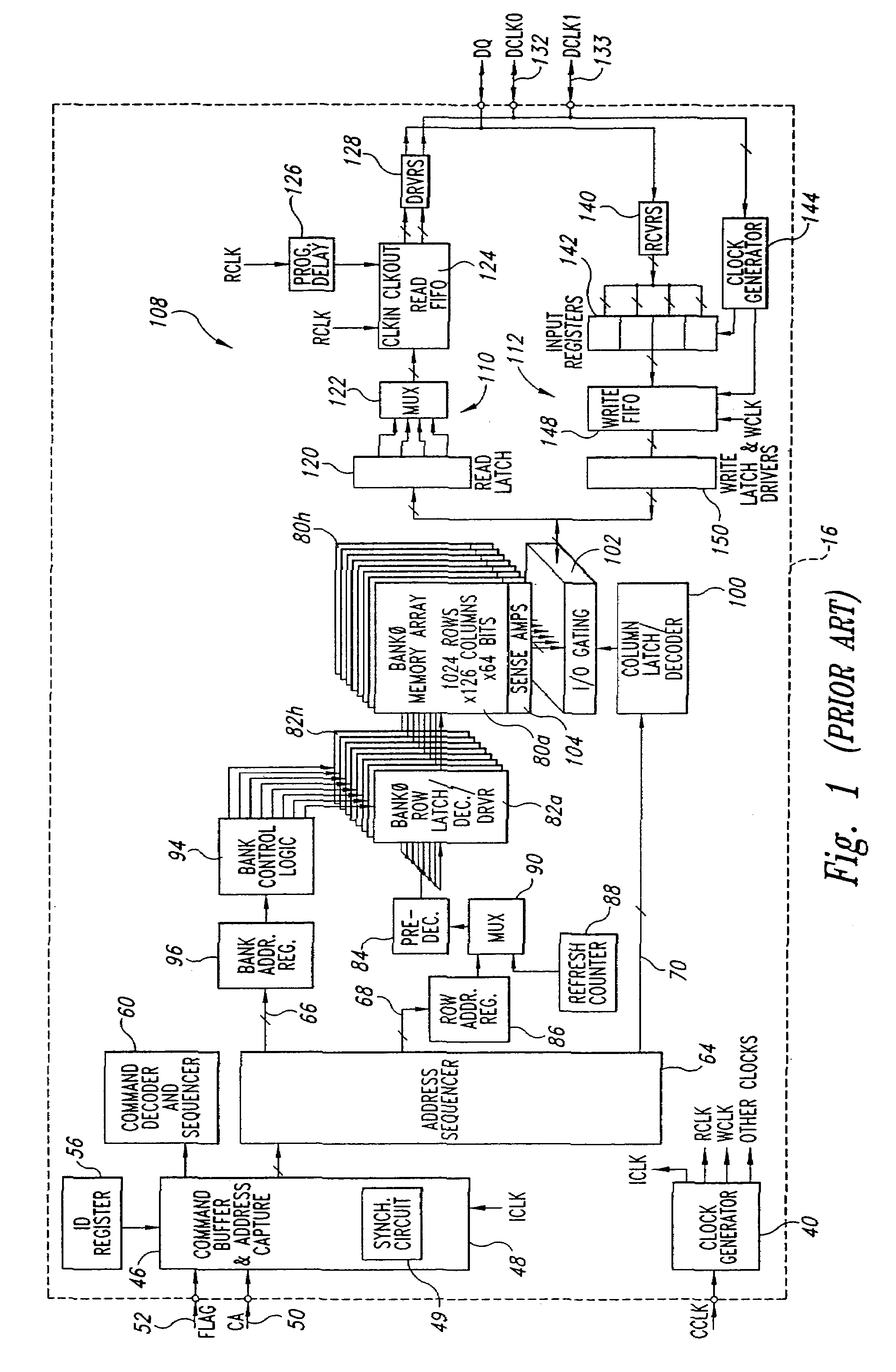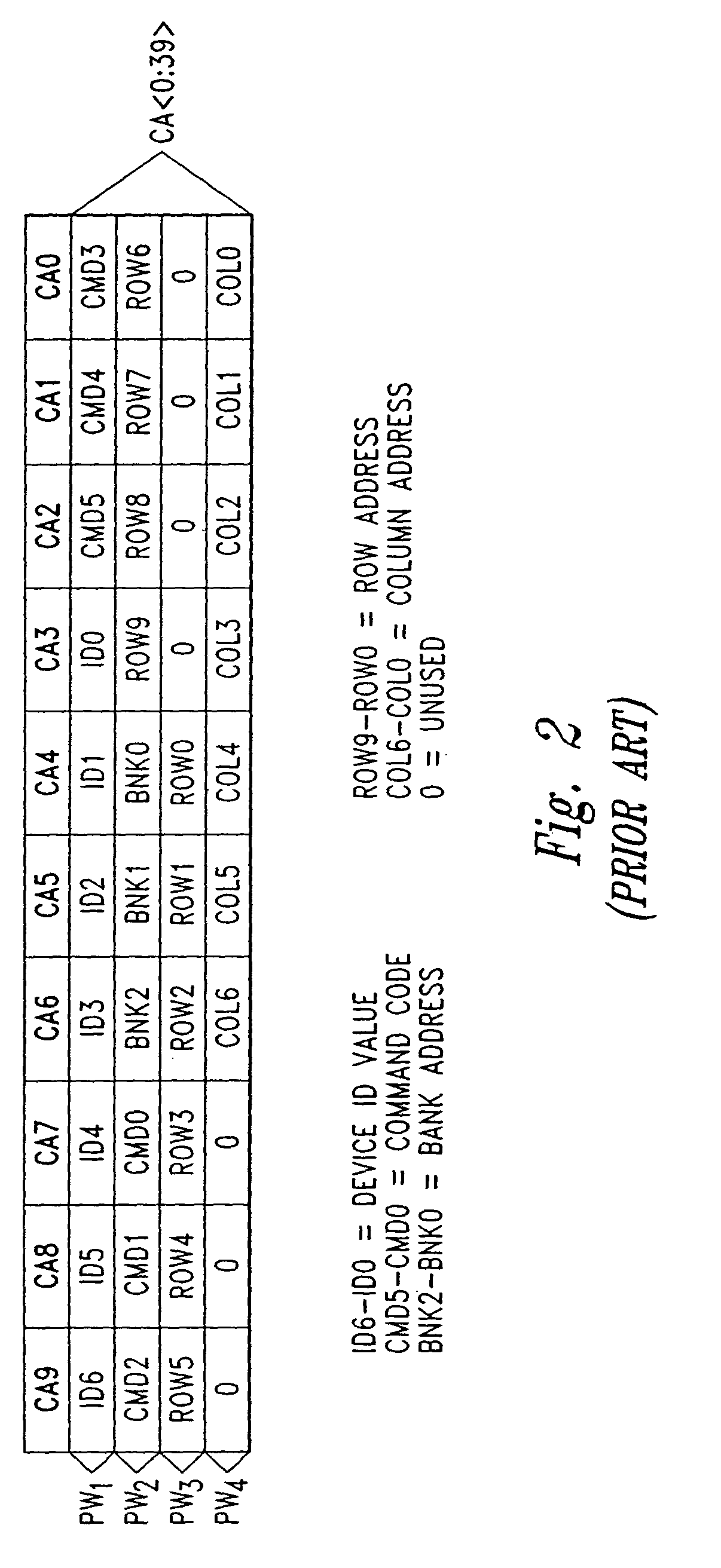Method and apparatus for generating expect data from a captured bit pattern, and memory device using same
a bit pattern and expect data technology, applied in the field of integrated circuit devices, can solve the problems of limiting the overall performance of the computer system, their relatively low speed, and becoming more difficult to maintain synchronization between signals transmitted to the memory devi
- Summary
- Abstract
- Description
- Claims
- Application Information
AI Technical Summary
Benefits of technology
Problems solved by technology
Method used
Image
Examples
Embodiment Construction
[0036]FIG. 4 is a functional block diagram of a synchronization circuit 400 including a pattern generator 402 according to one embodiment of the present invention. Typically, the synchronization circuit 400 is contained in the command buffer 46, address capture circuit 50, and clock generation circuits 40, 144 of the SLDRAM 16 of FIG. 1, and operates during an initialization mode of the SLDRAM to synchronize the clock signals CCLK, DCLK0, and DCLK1, as will be explained in more detail below. During synchronization of the clock signals CCLK, CLK0, and DCLK1, the pattern generator 402 generates a sequence of expect data words in response to a sample or seed group of bits latched on one of the terminals of the SLDRAM, as will also be described in more detail below. Components and signals that were previously described with reference to FIG. 1 have been given the same reference numbers in FIG. 4, and will not be described in further detail.
[0037]In FIG. 4, only the components of the syn...
PUM
 Login to view more
Login to view more Abstract
Description
Claims
Application Information
 Login to view more
Login to view more - R&D Engineer
- R&D Manager
- IP Professional
- Industry Leading Data Capabilities
- Powerful AI technology
- Patent DNA Extraction
Browse by: Latest US Patents, China's latest patents, Technical Efficacy Thesaurus, Application Domain, Technology Topic.
© 2024 PatSnap. All rights reserved.Legal|Privacy policy|Modern Slavery Act Transparency Statement|Sitemap



